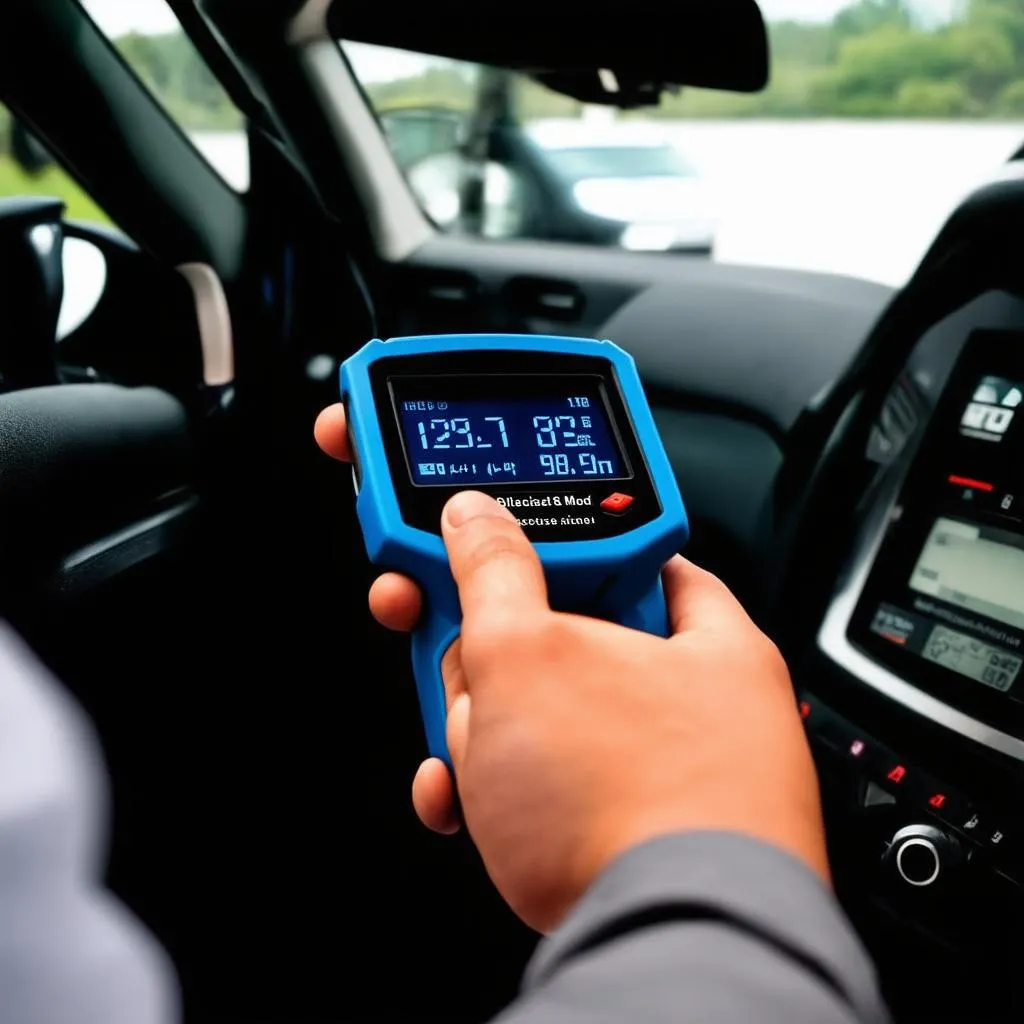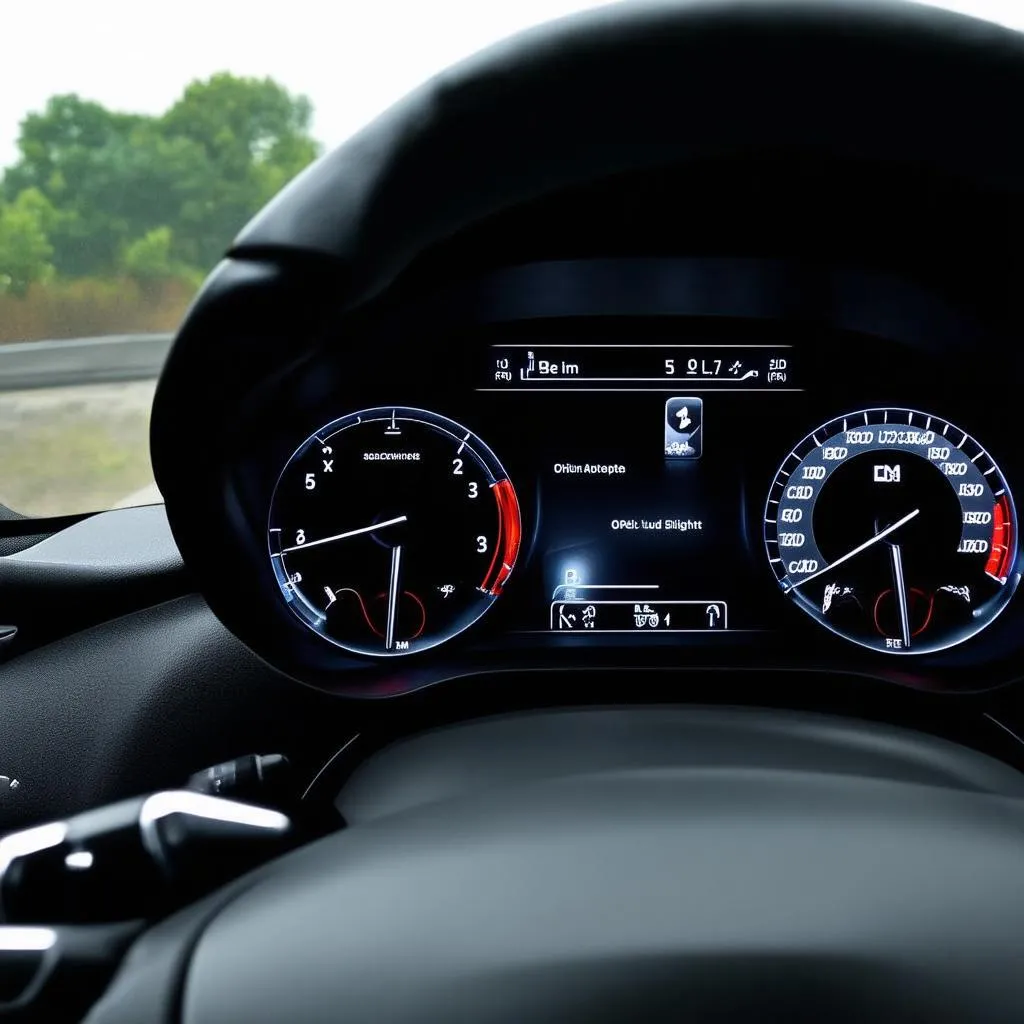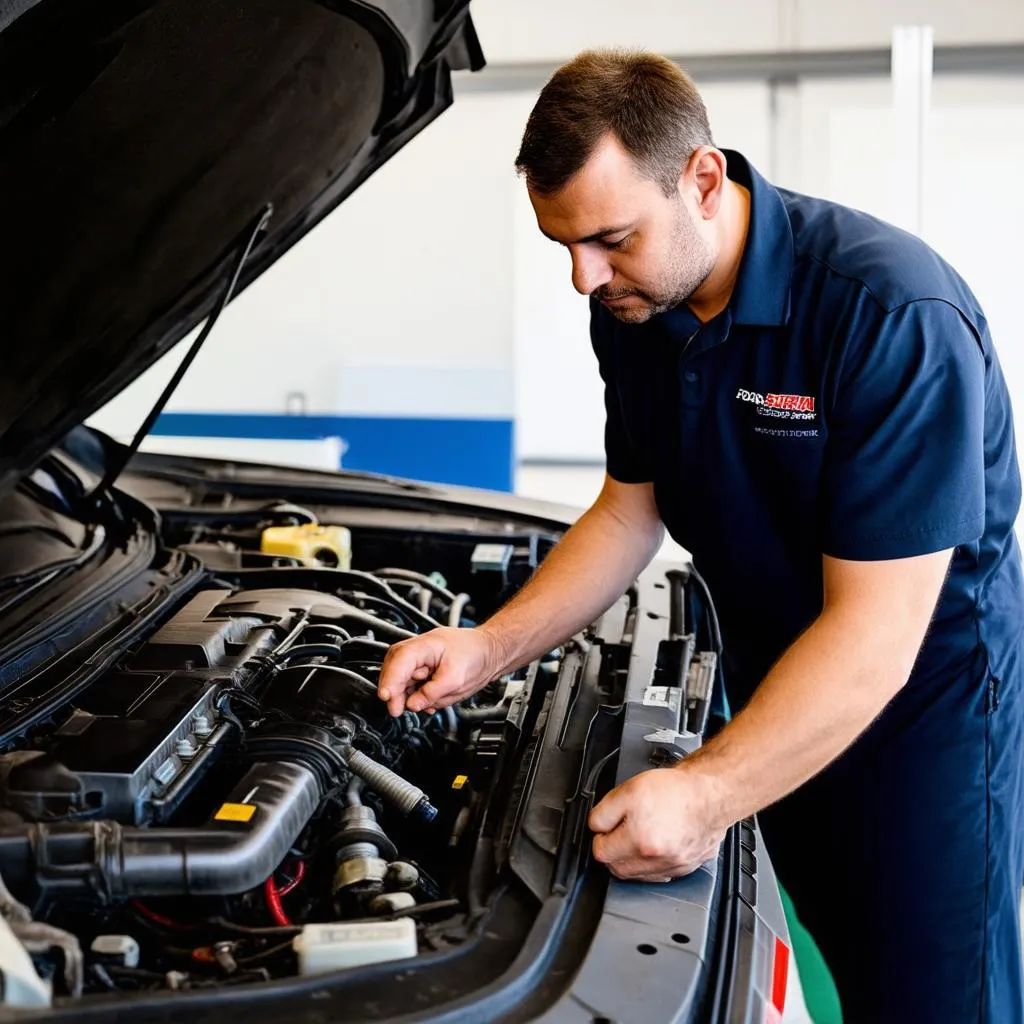Have you ever been driving down the road, enjoying the open highway, when suddenly a little light on your dashboard starts blinking ominously? It’s like a little warning sign saying, “Hey, something’s not quite right!” That light is your OBD (On-Board Diagnostics) light, and it’s a powerful tool that can help you understand your car’s health. But what does it mean when the light is on? And what should you do about it?
Why is the Obd Light important?
The Obd Light, often referred to as the “check engine light,” is a crucial part of your car’s safety system. It’s like a canary in a coal mine, letting you know that something needs attention before it becomes a serious problem. This little light can save you a lot of trouble in the long run, preventing major breakdowns and potentially expensive repairs.
What does the Obd Light mean?
The OBD light illuminates when your car’s computer detects a problem with the engine or emissions system. It could be anything from a loose gas cap to a malfunctioning sensor. While it’s tempting to ignore it, remember that the OBD light is there for a reason.
How to Decode the Obd Light
It’s crucial to understand that the OBD light itself doesn’t tell you everything. It’s just a warning signal. To diagnose the problem, you need to decipher the code that your car’s computer is trying to communicate.
What are OBD codes?
OBD codes are diagnostic codes stored in your car’s computer memory. These codes are like secret messages that give you a glimpse into the inner workings of your car. Each code corresponds to a specific problem, and with the right tools and knowledge, you can translate these codes into a clear and understandable explanation.
How to get the OBD code?
You can get your car’s OBD code through various methods:
- Using an OBD scanner: This is the most common and accurate method. OBD scanners are readily available online and at auto parts stores. They plug into your car’s OBD port, usually located under the dashboard, and display the code on the scanner’s screen.
- Visiting a mechanic: If you’re not comfortable using an OBD scanner yourself, a mechanic can read the code for you.
Deciphering the code:
Once you have the OBD code, you can look it up online or use a specialized app to understand what it means. Many resources are available to help you decipher the codes, and there are even websites dedicated to providing detailed explanations.
What to do when the Obd Light is on?
Step 1: Understand the problem
First, you need to identify the specific problem associated with the OBD code. You can usually find detailed descriptions of each code online.
Step 2: Take action
Once you understand the problem, you can take action. Some problems can be resolved easily, like tightening a loose gas cap. However, some issues may require professional attention.
Common Problems Triggering the Obd Light
Here are some common issues that can trigger the OBD light:
- Loose gas cap: This is the most common cause of the OBD light. A loose gas cap can cause fuel to evaporate from the tank, increasing emissions.
- Oxygen sensor failure: The oxygen sensor measures the amount of oxygen in the exhaust gas. A faulty sensor can cause the engine to run poorly and increase emissions.
- Spark plug issues: Worn or faulty spark plugs can cause misfires and affect engine performance.
- Mass airflow sensor problems: The mass airflow sensor measures the amount of air entering the engine. A malfunctioning sensor can lead to improper fuel-air mixture and engine problems.
- Catalytic converter issues: The catalytic converter is a part of the exhaust system that converts harmful emissions into less harmful ones. A damaged or clogged catalytic converter can cause a decrease in fuel efficiency and increase emissions.
Common Questions About Obd Lights
Here are some common questions you might have about the OBD light:
1. Can I keep driving with the OBD light on?
While it’s not advisable to ignore the OBD light, it’s usually safe to drive for a short distance to get to a mechanic or a repair shop. However, it’s important to note that driving with the OBD light on can potentially damage your car’s engine or emissions system.
2. How do I reset the OBD light?
You can reset the OBD light by disconnecting the battery for a few minutes. This will clear the memory of your car’s computer. However, it’s important to note that resetting the OBD light will not fix the underlying problem.
3. Can I fix the problem myself?
In some cases, you may be able to fix the problem yourself. For example, if the OBD light is on due to a loose gas cap, simply tightening the cap will reset the light. However, for more complex issues, it’s best to seek professional help.
4. How much does it cost to fix an OBD light problem?
The cost of fixing an OBD light problem can vary significantly depending on the underlying issue. A simple repair, like replacing a spark plug, may cost a few hundred dollars, while a more complex repair, like replacing a catalytic converter, could cost several thousand dollars.
Obd Lights: A Tale of Two Cars
The Case of the Misfiring Mustang
Once upon a time, a young car enthusiast named David was driving his prized Mustang down the highway. Suddenly, the OBD light started blinking. David, being a car guy, knew something was wrong. He pulled over and used his trusty OBD scanner to read the code. The code indicated a misfire in the engine. David, being a resourceful fellow, knew that a misfire could be caused by faulty spark plugs. He checked the plugs, and sure enough, one of them was worn out. He replaced the spark plug, reset the OBD light, and his Mustang was back to its roaring glory.
The Case of the Mysterious Mercedes
On the other side of town, a seasoned Mercedes owner named Sarah was on her way to a business meeting when the dreaded OBD light came on. Sarah, being a savvy driver, immediately pulled over and contacted her trusted mechanic. The mechanic, using his advanced diagnostics equipment, discovered a faulty oxygen sensor. The sensor was replaced, and Sarah’s Mercedes was back on the road, running smoothly.
What Does the Future Hold for Obd Lights?
OBD lights are continuously evolving. As technology advances, these lights will become even more sophisticated, providing drivers with more precise and detailed information about their vehicles.
The Tao of the Obd Light
Some might see the OBD light as a harbinger of bad luck, a symbol of impending car trouble. But others, like myself, view it as a wise teacher, guiding us towards maintaining the health of our vehicles. The OBD light, like a spiritual guide, reminds us that everything is interconnected and that even the smallest issues can escalate into significant problems if left unchecked.
Conclusion
The OBD light is a valuable tool for every driver. By understanding what it means and taking the appropriate action, you can keep your car running smoothly and avoid costly repairs.
If you have any questions about the OBD light or need help deciphering a code, don’t hesitate to contact us. Our team of experts is available 24/7 to assist you.
 obd scanner tool
obd scanner tool
 obd light on dashboard
obd light on dashboard
 mechanic inspecting car
mechanic inspecting car
For further help with your OBD Light, connect with us on WhatsApp: +84767531508.
We hope you found this article helpful! If you have any questions or comments, please leave them below. And be sure to check out our other articles on car maintenance and repair!